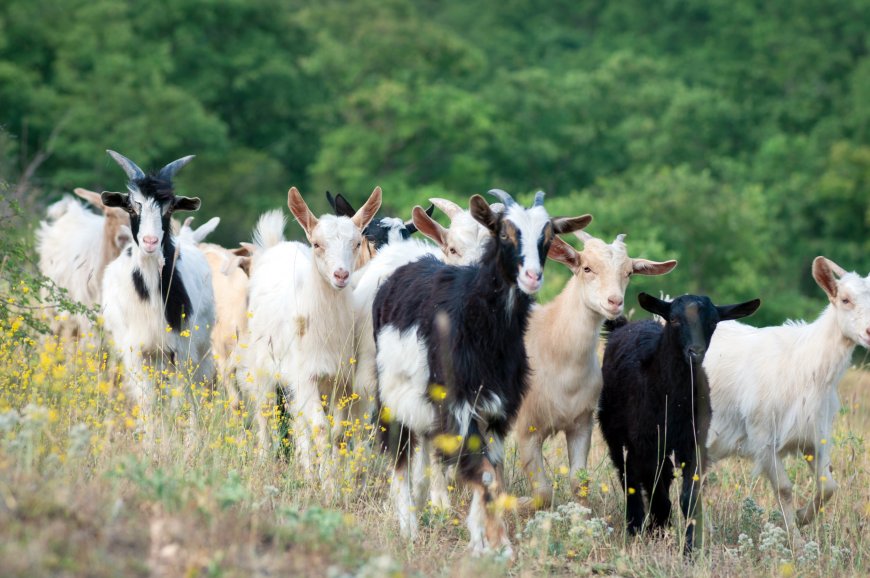Livestock Identification: Key to Traceability and Disease Prevention
Most countries have developed national systems to uniquely identify livestock using various identification and registration methods.

National Livestock Identification Systems
Most countries have developed national systems to uniquely identify livestock using various identification and registration methods. These systems allow animals and herd owners to be easily traced from birth through the production chain. This traceability is important for food safety as well as for disease control and eradication programs. National identification systems commonly utilize identification devices like ear tags or tattoos correlated to a central database containing animal and herd records.
Methods of Animal Identification
The main methods used for permanent identification of individual animals include electronic identification (EID) tags applied in the ear or bolus capsules ingested orally. EID tags have an onboard transponder that transmits a unique identification number when scanned by a reader. Hot or cold branding of cattle is also still used as a permanent visual identifier in some regions. Temporary methods like neckbands or paint marks are applied for grouping or sorting but don't provide long-term individual traceability. Tattooing is best used for species like sheep and goats where ear tagging may not stay attached. Regardless of the identification method, all allocated IDs should be properly recorded and securely stored in a database.
Traceability from Birth to Slaughter
Farms, ranches and other livestock operations are typically assigned a unique premises identification number (PIN) which is linked to animals born or kept on that location. At birth, each young animal receives its own individual identification number (IIN) which is recorded along with key information like species, sex, date of birth etc. This birth record forms the basis of an animal's lifelong traceability file. As they move through stages of production like weaning, breeding or feedlots, change of ownership details must be documented through transaction certificates.
At slaughter, the final destination is recorded after the identification is read and the carcass traced back to the farm of origin. This end-to-end traceability allows rapid traceback in case of disease outbreaks or food safety issues. Some countries also require slaughter plants to electronically submit animal identification and slaughter data to regulatory authorities. Constant monitoring and auditing of identification records helps ensure the integrity and accuracy of national traceability systems.
Disease Control and Eradication
Effective animal identification and traceability is vital for the control and eradication of infectious livestock diseases. When an outbreak occurs, traceability records allow fast identification of all animals that may have come in contact with the disease. Regions or herds at risk can be quarantined and surveillance increased to contain the spread. Identification also supports disease monitoring and surveillance programs. For example, tagging is used to randomly test cattle herds for diseases like bovine tuberculosis (TB) or brucellosis.
Positive animals can then be tracked back to the farm of origin for further investigation and testing of associated herds. Over many such tracing and testing cycles, diseases like TB have been successfully eradicated from cattle in some countries. Identification further aids disease control by restricting animal movements during outbreaks and allowing only tracing-compliant shipments between premises. Overall, national Livestock Identification systems improve early detection of outbreaks and facilitate a rapid, targeted response critical to disease control.
Challenges of Livestock Identification Systems
While livestock identification provides significant advantages,challenges remain in effective implementation and adoption of identification systems worldwide. Initial investment costs and ongoing operational expenses of tagging, database management and reader technology can be prohibitive for smaller producers. Issues like lost or damaged identification, inconsistent record keeping, lack of compliance auditing and deficient tracing protocols limit traceability. Trans-boundary movements between countries with incompatible identification standards undermine international traceability efforts. Additional considerations include data privacy, ownership transfer processes and coordination between private sector stakeholders and regulatory authorities.
Overcoming such challenges demands a collaborative approach between government, industry and producers. Harmonization of standards and investment in reader infrastructure can boost usability and traceability compliance. Educational programs promote recognition of identification’s economic and public health benefits along with proper tagging, record keeping and reporting procedures. As technologies progress, cheaper, more reliable alternatives like mobile apps that link to centralized tracking databases could help smallholders realize traceability’s value. With ongoing cooperation and advancement, livestock identification systems will continue enhancing food safety, disease control and trade both nationally and globally.
Benefits of Good Identification and Traceability Practices
Farmer livelihoods and livestock industry competitiveness rely on healthy herds and disease prevention. Maintaining accurate animal records through committed identification and traceability practices helps safeguard against production and economic losses. In outbreak scenarios, promptly tracing animals allows minimizing culling and quarantine extent. Good traceability also supports demonstrating disease-free status essential for facilitating livestock and product trade both domestically and abroad. Enhanced consumer confidence in food safety assurance brings market rewards. Overall, commitment to traceability best protects animal health, farmer interests and public wellbeing—key components of sustainable livestock production globally.
In summary, national livestock identification systems are integral infrastructure for traceability from farm to slaughter. Facilitating rapid disease control response and surveillance efficacy, they underpin efforts to prevent spread and potentially eradicate infectious diseases. Though implementation challenges remain, stakeholder cooperation advances traceability standards and technologies benefitting animal industries, food systems and public health worldwide. Effective animal identification practice should be a priority for all those involved in livestock production.
Get more insights on Livestock Identification
Discover the Report for More Insights, Tailored to Your Language
About Author:
Money Singh is a seasoned content writer with over four years of experience in the market research sector. Her expertise spans various industries, including food and beverages, biotechnology, chemical and materials, defense and aerospace, consumer goods, etc. (https://www.linkedin.com/in/money-singh-590844163)
What's Your Reaction?
 Like
0
Like
0
 Dislike
0
Dislike
0
 Love
0
Love
0
 Funny
0
Funny
0
 Angry
0
Angry
0
 Sad
0
Sad
0
 Wow
0
Wow
0














































